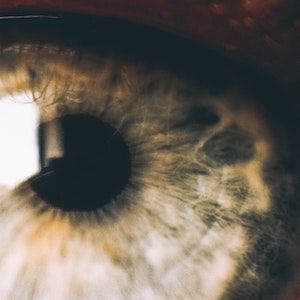Article
Adverse Event Data Mining Finds Few Ocular Side Effects From PCSK9 Inhibitors
Author(s):
Pharmacovigilance studies sifting through FDA adverse event reports confirm ocular side effects from PCSK9 inhibitors are infrequent and minor.

The chance of experiencing even minor ocular side effects from PCSK9 inhibitor cholesterol-lowering agents is exceedingly low, according to 2 recent pharmacovigilance investigations of the agents by separate groups of investigators in China. Both studies accessed US postmarketing data in the Food and Drug Administration's Adverse Event Reporting System (FAERS).
The study searching specifically for any reported ocular side effects was led by Shenyin Zhu, PhD, Chief Pharmacist, Department of Pharmacy, The First Affiliated Hospital of Chongquing Medical University, Chongquing, China. The other study, seeking to establish a broad adverse event profile for the agents, was conducted by Professor Ying Zou, Research Division of Clinical Pharmacology, First Affiliated Hospital of Nanjing Medical University, Nanjing, Jiangsu, China, and colleagues.
Both investigator groups acknowledged previous studies which have indicated that evolocumab and alirocumab are safe and well tolerated; and Zhu and colleagues noted that ocular side effects were not among the adverse events emerging in the New Drug Application (NDA) clinical trials which occurred with the frequency or severity to warrant inclusion in the approved labeling.In Zou's findings, they represented approximately 0.25% of all adverse events reported to FAERS, grouped by system organ class.
Zhu and colleagues point out that ocular adverse events have been reported in some clinical trials, albeit less than in the placebo group of the ODYSSEY trial.They did find 1 trial reporting an occurrence in 2.9% of those taking alirocumab, compared to 1.9% in the placebo group.In addition, they point to some associations of ocular disorders with disordered plasma cholesterol levels; and reason the possibility that these might also arise with the therapeutic effect of PCSK9 inhibitors lowering LDL-C levels.
With the possibility that ocular adverse effects may have been reported in the larger population after marketing, despite not being detected in the premarketing trials, Zhu and colleagues applied a disproportionality analysis for ocular reports among the FAERS.
"This study is the first disproportionality analysis of ocular disorders with PCSK9 inhibitors using an extensive pharmacovigilance database," Zhu and colleagues indicated.
They also indicate, in the introduction of the published study, that theirs is likely the only analysis for a possible association.
A total of 103,531 reports involving at least one PCSK9 inhibitor were found in the FAERS.Their initial analysis suggested that PCSK9 inhibitors were associated with higher reporting of increased lacrimation (Information Component [IC], 0.27; 95% CI, 0.02-0.45, and Reporting Odds Ratio [ROR] 1.21, 95% CI, 1.04-1.40); and "eye operation"—which is not further described—with IC 0.66 (95% CI, 0.04-1.10), and ROR 1.60 (95% CI, 1.11-2.30). They also attribute some disproportionate reporting of "seasonal allergy" to persons receiving the agents.
In further analysis, Zhu and colleagues found that the positive signal of increased lacrimation disappeared after excluding other lipid-lowering drugs. Both investigator groups found the relative lack of ocular effects and the general safety profiles were similar for evolocumab and alirocumab.
The studies, "Ocular Disorders Associated With PCSK9 Inhibitors: A Pharmacovigilance Disproportionality Analysis" and "Adverse Event Profiles of PCSK9 Inhibitors Alirocumab and Evolocumab: Data Mining of the FDA Adverse Event Reporting System" were published online in the British Journal of Clinical Pharmacology.




